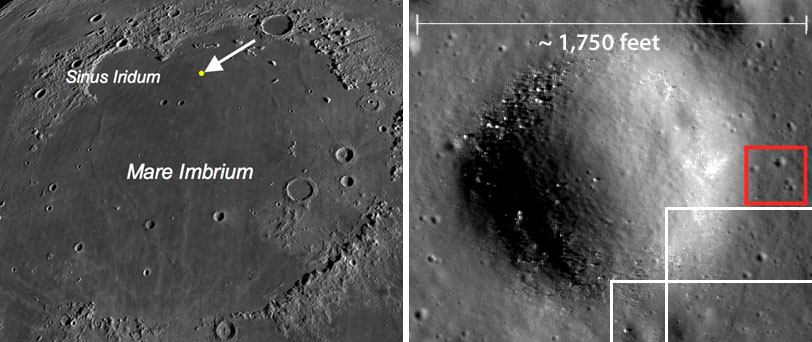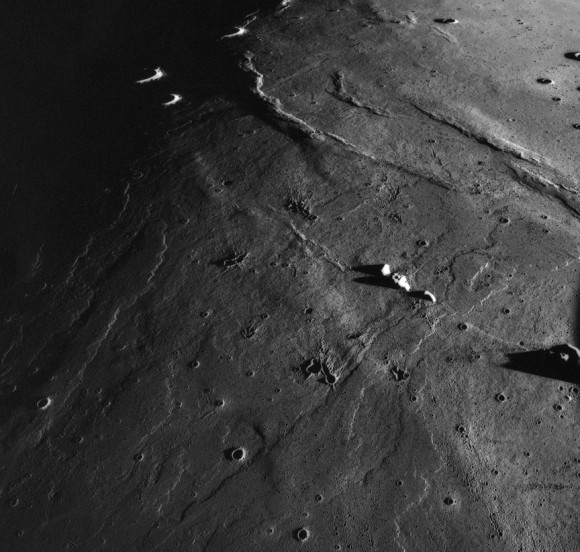http://www.planetary.org/blogs/emily-lakdawalla/2013/12172045-change-3-update.html wrote:
Chang'e 3 update: 6 instruments active
by Emily Lakdawalla, Planetary Society, 2013/12/17
<<Today there was a lengthy press briefing by several members of the Chang'e 3 science team. A complete transcript was posted in Chinese here. I have run it through two machine translators (Google and a Chinese one, fanyi.baidu.com) and found it to be quite informative, not just about the mission but also about attitudes about Chinese space exploration and foreign cooperation.
But before I get to that, I want to share this new fan-produced
animation of the landing, putting the site into context, with music.
In this blog post I'm doing my best to translate the content of the press briefing. You can try to follow along yourself with this document, in which I compare the original Mandarin text with the two machine translations. Times in brackets correspond to times listed in that document.
Zhang Tengyue talked about the confusion felt by himself and Ouyang Ziyuan on the live broadcast, when they were expecting to see pictures of the lander from the rover, but they did not. I smiled when I read this because I had likewise been confused about there being no pictures of the lander on the CCTV live broadcast; I wound up locating a photo of the lander on a forum after it had been shared on the Chinese-language broadcast. It was funny to know that he and Ouyang had been as confused as I. Zhang talked about exchanging handwritten notes with Ouyang during the broadcast to decide whether they should ask about the photo of the lander? Ouyang advised him not to. Wu explained that the reason they showed photos of the rover but not the lander on the English-language broadcast was because they were considering the historical importance of the photos, and were particularly concerned about showing the images of the Chinese national flag on the Moon. Since the rover was to the north of the lander and both were in the northern hemisphere, the Sun was to the south, so the rover (and hence the flag) were well illuminated by the Sun as seen from the lander, but badly lit as seen from the rover. So they chose, during the live broadcast, to transmit photos of the rover with its flag, since they were better lit.
Zheng He reported on the current status of the lander.
As best as I can do with the translation: "Change 3 is working very well on the Moon. All conditions very good, nominal. It has already begun to do extreme ultraviolet optical imaging work." Right now, it's a full Moon, which means that from the point of view of the surface of the Moon, Earth is dark; this is the best time for Chang'e 3 to conduct astronomical observations.
http://en.wikipedia.org/wiki/Chang%27e_3 wrote:
<<The Chang'e 3 lander is equipped with a 150 mm Ritchey–Chrétien telescope that will be used to observe galaxies, active galactic nuclei, variable stars, binaries, novae, quasars and blazars in the near-UV band (245-340 nm), and is capable of detecting objects at a brightness as low as magnitude 13. The thin atmosphere and slow rotation of the Moon allow extremely long, uninterrupted observations of a target. The LUT will be the first long term lunar-based astronomical observatory, making continuous observations of important celestial bodies to study their light variation and better improve our current models. The lander also carries an extreme ultraviolet camera, which will be used to observe the Earth's plasmasphere in order to examine its structure and dynamics and to investigate how it is affected by solar activity.>>
The host asked about the surprising proximity of a crater to the lander. Zheng responds (again, my best translation): "After we landed and saw the camera image [of the crater], we felt very lucky, but also very successful....This picture shows us right in front of a pit, with stone blocks right in front of the lander. But underneath the lander's feet the ground is very flat. This shows that the autonomous navigation and obstacle avoidance that we designed has succeeded, and we landed on a safe area. The crater is ten meters away from the lander; we can navigate around it, our plans are not affected by it."
The second thing that made the Chang'e landing difficult, she said, was the fact that they could not be certain what they would find in the landing site. "The lunar surface is undulating, and this has a great impact on the control of our landing process. And the final landing site could be soft soil or it could be on hard rock; this has a great impact on our landing cushion. We also wonder what kind of dust the landing will produce." She talks about how they had to design the lander and its software to "overcome the uncontrollability of these uncertainties." She goes on to talk at length about the problem of lunar dust and the difficulties that Lunokhod 2 faced because of it.
Next Su Yan talked about the scientific work being undertaken by Chang'e 3. They mostly can't operate during lunar night because of the intensely cold temperatures, so they perform scientific observations during the lunar day. She talked about testing the Yutu ground-penetrating radar on glaciers in the Qilian mountains, and clearly seeing the glacier and rock layering there; she looks forward to lunar data. Su said that six of the eight instruments are now operating. This list I'll actually copy from an English-language article about the briefing: "Except for the alpha particle X-ray spectrometer and the visible and near-infrared imaging spectrometer, the instruments have all been activated and are undergoing tests and adjustments."
There was some discussion of the value of the scientific experiments being conducted by Chang'e 3, and then the briefing was opened to questions from the media. The first question was of the inevitable "how will this benefit Earth" variety. I found it interesting that Wu Weiren's lengthy response talked about the return on investment achieved through the Apollo missions, stating that for each American dollar invested into the Apollo program, 7 to 15 dollars were returned, by different estimates. Wu also talked about how, as a fraction of its GDP, Chinese investment in space is very small; and also pointed out that, to date, China's planetary exploration efforts have seen 100% success. Then they discussed how technologies and materials developed for the Chang'e program will eventually find civilian applications.
Then, a very interesting statement from the moderator. He brought up the whitehouse.gov petition initiated by a 6-year-old boy to "Increase NASA funding. So we can discover new worlds, protect us from danger and to make dreams come true." The petition has been all over science and technology news this week, but I was still surprised to hear it brought up in this Chinese forum.
He talked about China suddenly realizing this month that the South China Sea was important to China after 70 years of ignoring it, and remarked that it would be short-sighted of China not to go to the Moon, to let others go there instead.
Another reporter asked about Chang'e 5 and the plans to launch it from a new launch facility. Liu Jianzhong spoke about how Chang'e 5 will require the new Long March V rocket and will need to be launched from a new site in Wenchang, Hainan. The advantage of the new site is that it is at a lower latitude, 19 degrees as opposed to 28.5 for Xichang, which launches a spacecraft with more energy; also, Wenchang will be a coastal launch facility with launches over the ocean, avoiding the problem of rocket parts falling on populated areas. Finally, Long March V will be a five-meter-diameter rocket, and China's inland railways can only accommodate payloads 3.5 meters wide.
The same reporter inquired about foreign cooperation and data sharing. Su Yan said that there are cooperative agreements in place with ESA, and that the Chang'e 1 and 2 data have already been made available to them. "NASA cooperation with us is more difficult," NASA is not permitted to host information about Chinese missions on their websites, and it is not possible to cooperate officially. But, she said, she works for the National Astronomical Observatory, which has very large cooperation with foreign countries. Then Wu went on to talk about NASA's specific interests in Chang'e data sharing. It's clear that NASA expressed interest in information about the Chang'e 3 lander's fuel expenditure during landing, which has direct application to the LADEE mission, as I've discussed before. NASA also asked for Chang'e 3 tracking data, so that the LADEE mission would know where and when Chang'e 3 was disturbing the lunar atmosphere. "But we also asked [NASA] to provide data [in return], and [NASA] did not agree. The U.S. Congress passed a resolution that stated that NASA cannot cooperate with China for fear we will steal their technology." If I understand correctly, I think he went on to say that in a way the American refusal to share information with China has helped China's space program, forcing China to develop their own technology, their own strength.
I will note here that Representative Frank Wolf (R-Virginia), the author of the policy that prevents NASA from cooperating with the Chinese space agency, announced today that he will not be seeking reelection. Perhaps this policy will be reexamined soon, and the LADEE team will be able to exchange information with the Chang'e 3 team that will enable better scientific results from both missions.
Zhang He talked about preventing failure through the application of new technologies unavailable to Soviet or Apollo lunar landers, including the laser ranging to determine a flat place to land, and the highly accurate, variable-thrust landing engine.
(Both translation services insist upon translating the Mandarin term for "newton," the unit of thrust, as "bovine" or "cattle," which makes discussion of the "7500 bovine variable thrust engine" amusing.)
Wu Weiren also talked about the rover having autonomous navigation capability. The Soviet Lunokhods required television monitors and continuous round-the-clock shifts of drivers to manually tele-operate them. Wu said that Yutu can be operated in this mode, but that there is also a "completely independent operation mode" in which it can be navigated to waypoints. It can avoid obstacles using both long- and near-distance stereo vision through navigational cameras on the mast and hazard avoidance cameras on the body, just like NASA's Mars rovers. "If a stone is too big, the rover will automatically turn, then go around it."
A reporter asked about the video of the landing, in which the lander pauses, slides to the side, then descends. Zhang He responded that the lander was able to perform up to three assessments of landing site suitability with laser ranging, but that the computer wound up needing only one assessment to locate a safe spot to land.
Yutu is sleeping right now, because it cannot operate during the heat of lunar noon; it's supposed to start working again on December 23. Lunar Reconnaissance Orbiter will attempt an image on December 24.>>






